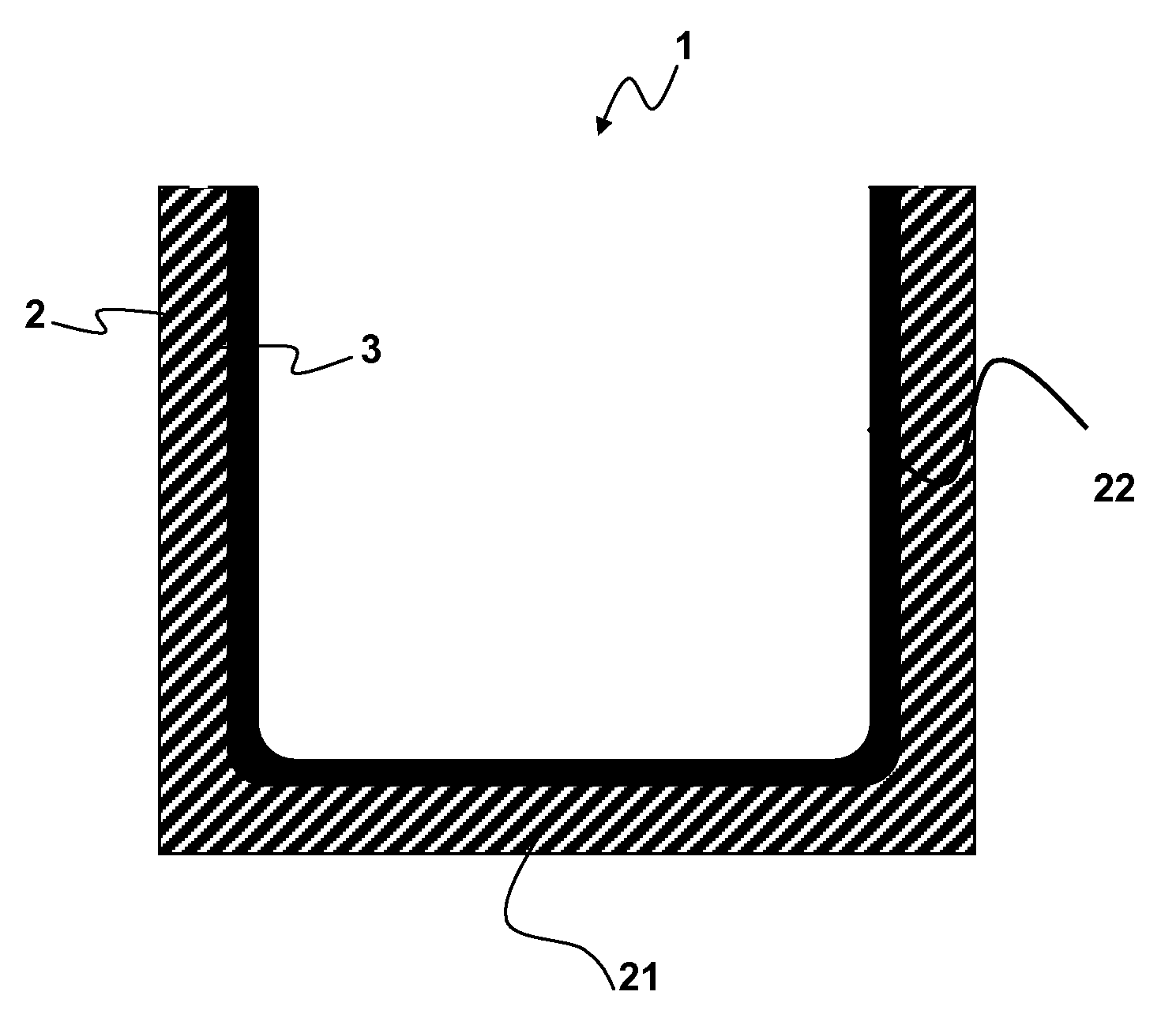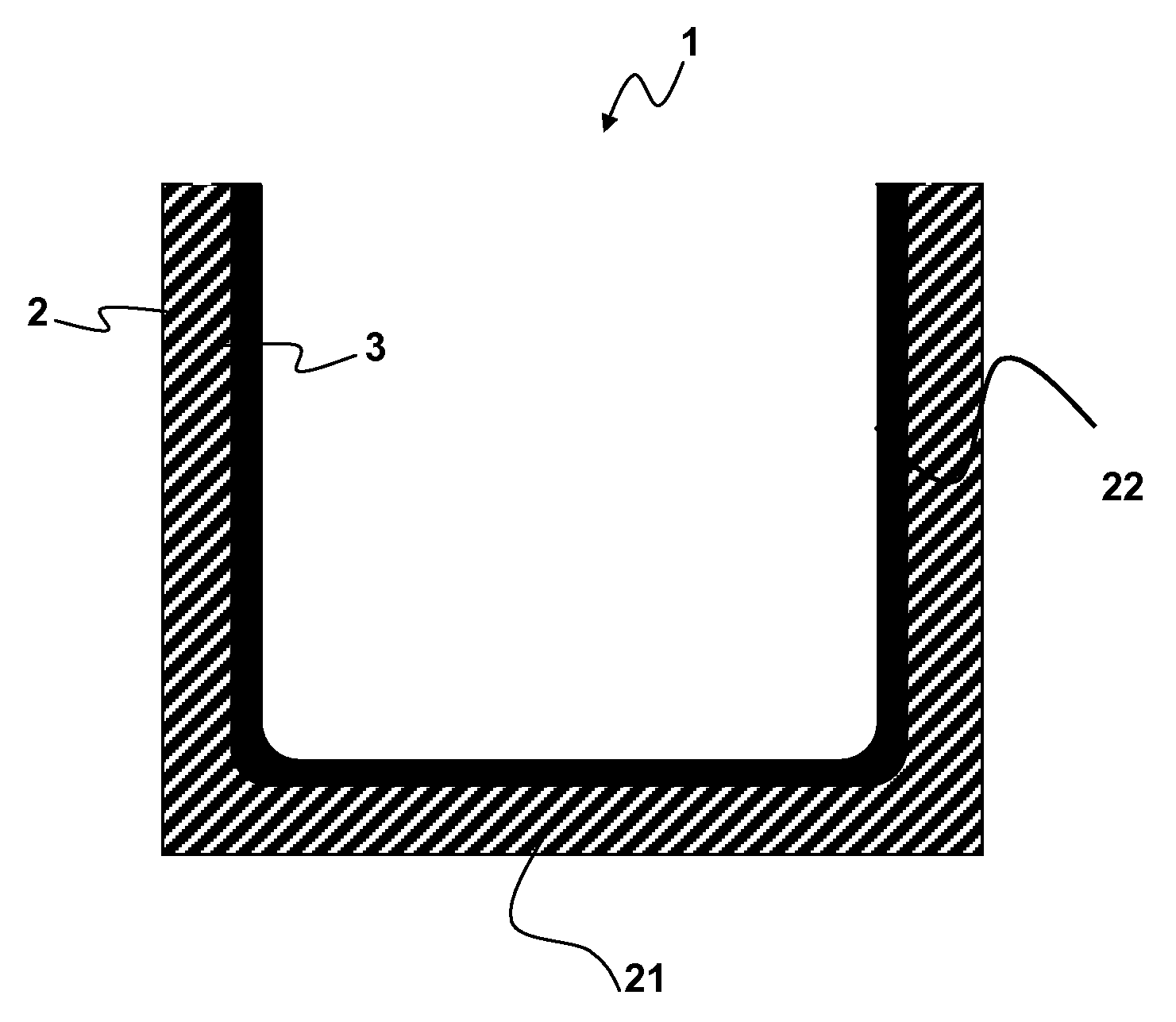Crucible for the crystallization of silicon and process for making the same
a technology of crystallization and crucibles, which is applied in the direction of separation processes, lighting and heating apparatus, furnaces, etc., can solve the problems of contaminating silicon with oxygen, cracking on cooling, and contaminating silicon with carbon, so as to improve the stability of suspension, improve one or more characteristics, and high reactivity of binder
- Summary
- Abstract
- Description
- Claims
- Application Information
AI Technical Summary
Benefits of technology
Problems solved by technology
Method used
Image
Examples
Embodiment Construction
[0029]The invention will now be described with reference to the enclosed figure which only serves to illustrate the invention and is not intended to limit its scope. On the figure, the crucible is designated with reference number 1. It comprises a base body 2 comprising a bottom surface 21 and side walls 22 which define an inner volume for the crystallization of silicon. The crucible comprises a protective layer 3 which is comprised of 80 to 95 wt. % of silicon nitride, 5 to 20 wt % of a low temperature mineral binder, the total oxygen content being higher than 5% by weight at the surface of the side walls 22 facing the inner volume.
[0030]The invention will now be illustrated by way of examples according to the invention and comparative examples. The process to apply the coating on the base body can be achieved in different ways. The composition depends on the method chosen.
[0031]The first preferred method (reactive layer) comprises the step of[0032]mixing silicon nitride powders an...
PUM
| Property | Measurement | Unit |
|---|---|---|
| thickness | aaaaa | aaaaa |
| thickness | aaaaa | aaaaa |
| diameter | aaaaa | aaaaa |
Abstract
Description
Claims
Application Information
 Login to View More
Login to View More - R&D
- Intellectual Property
- Life Sciences
- Materials
- Tech Scout
- Unparalleled Data Quality
- Higher Quality Content
- 60% Fewer Hallucinations
Browse by: Latest US Patents, China's latest patents, Technical Efficacy Thesaurus, Application Domain, Technology Topic, Popular Technical Reports.
© 2025 PatSnap. All rights reserved.Legal|Privacy policy|Modern Slavery Act Transparency Statement|Sitemap|About US| Contact US: help@patsnap.com


